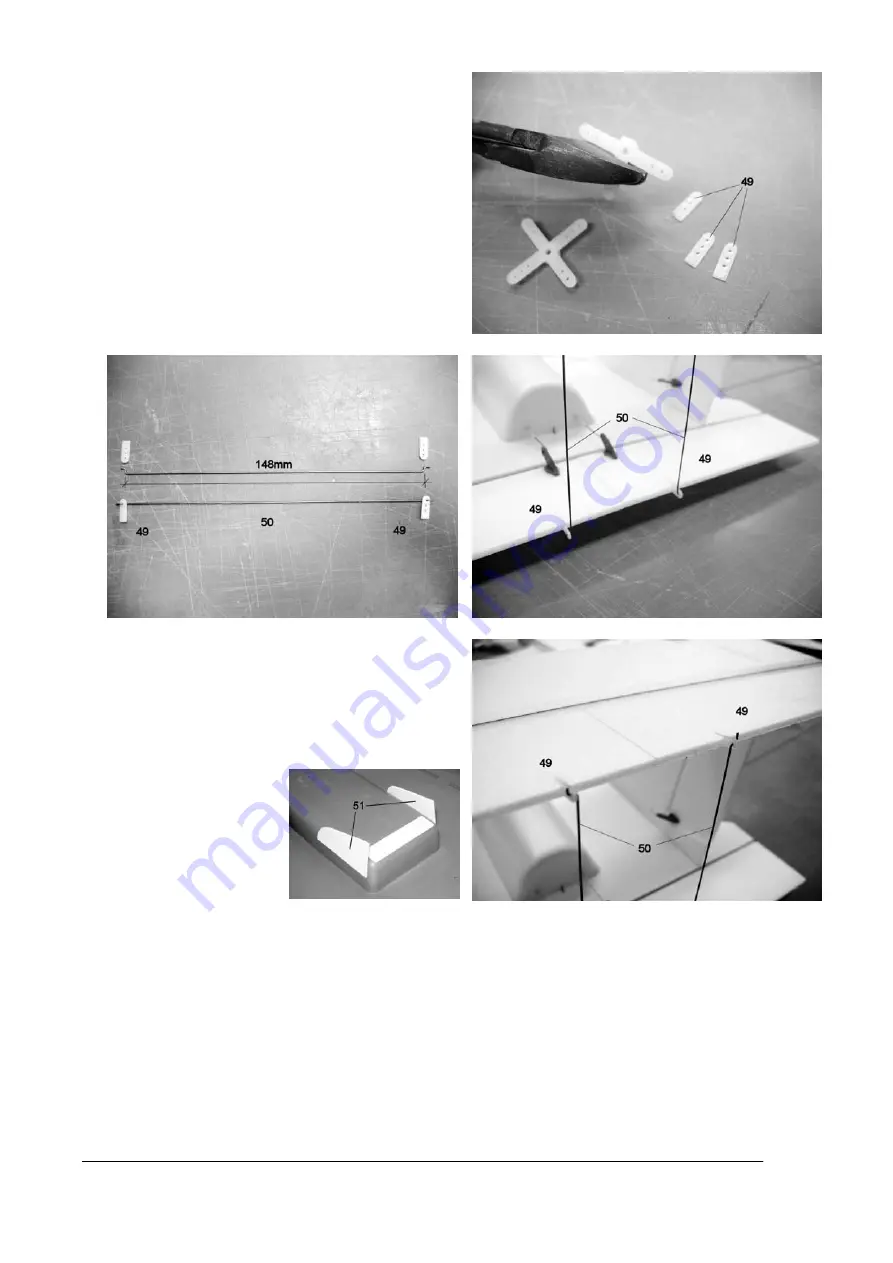
•
Set the elevons exactly to centre. Cut off the arms
(part 49) from the output devices supplied with the
servos; they should all be exactly the same length if
possible. Sand the arms lightly where they are to be
glued, and clean the area with a little methylated
spirit. Glue the horns in the slots in the control
surfaces using foam cyano. Bend the link pushrods
to the exact length of 148 mm from shaft centre to
shaft centre, and check that both are the same
length. Thread the pushrods into place at the
bottom, followed by the remaining servo arms on the
top. Set the control surfaces parallel to each other,
and glue the horns in place. TIP: the two control
surfaces must be parallel to each other; the servo
output arms can be glued in place at a slight angle
to compensate for any error.
•
If you encounter problems when running the model
on water, we recommend that you glue the two
guide vanes (part 51) in place, adjacent to the chine,
and aligned in the fore-and-aft direction. They act
like boat rudders, and help to stabilise the model
when running straight ahead on the water.
Setting up the model
•
The control surface travels should be as stated in the table below, but we recommend that you limit the
travels to about 60% for the first few flights using Dual Rates; the Dual Rates should be switchable if your
transmitter allows this.
Rudder
Elevator Aileron
right: 40 mm
up: 35 mm
up: 35 mm
left: 40 mm
down: 35 mm
down: 35 mm
Expo:
30%
Expo:
30%
Expo:
30%
•
Centre of Gravity (CG) position: 120 mm aft of the front hull reinforcement (part 3).
GRAUPNER GmbH & Co. KG D-73230 KIRCHHEIM/TECK GERMANY
Keine Haftung für Druckfehler. Technische Änderungen vorbehalten! No liability for printing errors. We reserve the right to introduce modifications. Sous réserve de modifications! Nous ne sommes pas responsables
d’éventuelles erreurs d’impression!
#56543
08/2005
28
















































